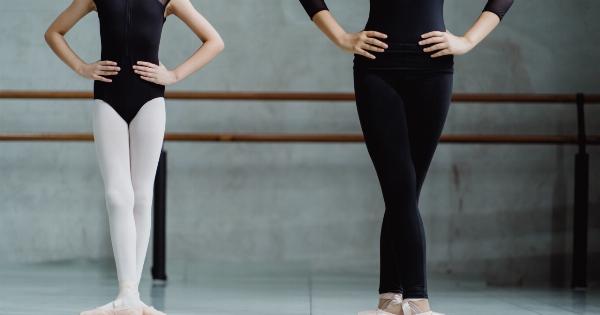Being a gymnast requires agility, flexibility, strength, and dedication. It is a sport that pushes the limits of the human body, combining acrobatics, dance, and strength-based elements.
Whether you have just started your gymnastics journey or have been practicing for years, this article aims to provide you with valuable information, tips, and insights into the world of gymnastics.
The Importance of Gymnastic Training
Gymnastics training offers numerous physical and mental benefits. From a physical standpoint, it helps improve coordination, balance, and flexibility. Gymnasts develop strong core and upper body strength through various routines and exercises.
Additionally, the sport promotes cardiovascular fitness, endurance, and the development of powerful muscles.
Not only does gymnastics build physical strength, but it also enhances mental well-being. It requires discipline, focus, and perseverance. Gymnasts learn goal-setting, time management, and the ability to handle pressure and performance anxiety.
The sport teaches valuable life skills that can be applied both inside and outside the gym.
The Different Types of Gymnastics
Gymnastics consists of several disciplines, each with its own unique techniques and apparatus. The main types of gymnastics include:.
1. Artistic Gymnastics
Artistic gymnastics is the most well-known and widely practiced form of gymnastics. It is a discipline that involves performing routines on various apparatus, including the floor, balance beam, uneven bars, and vault.
Artistic gymnastics emphasizes flexibility, strength, and elegance.
2. Rhythmic Gymnastics
Rhythmic gymnastics combines elements of ballet and artistic gymnastics. It involves performing routines to music using various handheld apparatus such as hoops, ribbons, balls, clubs, and ropes.
Rhythmic gymnastics emphasizes grace, flexibility, and precise control of the apparatus.
3. Trampoline Gymnastics
Trampoline gymnastics involves performing acrobatic movements on a trampoline. It focuses on height, technique, and body control during flips, twists, and somersaults.
Trampoline gymnastics is a thrilling and dynamic discipline that requires aerial awareness and precise timing.
4. Acrobatic Gymnastics
Acrobatic gymnastics involves pairs or groups of gymnasts performing coordinated routines that highlight strength, balance, and flexibility. It requires trust, communication, and synchronization between partners.
Acrobatic gymnastics showcases impressive lifts, balances, and acrobatic formations.
5. Tumbling
Tumbling is a high-energy form of gymnastics that focuses on floor exercises. Gymnasts perform sequences of flips, somersaults, and twists, showcasing power, agility, and control.
Tumbling is often seen in cheerleading routines and is a staple in floor exercise competitions.
Tips for Gymnastics Success
If you are a gymnast or aspiring to become one, here are some valuable tips to enhance your performance:.
1. Consistency is Key
Regular practice is essential for progress in gymnastics. Consistency helps build muscle memory, allowing your body to perform complex movements more efficiently. Aim to practice several times a week and stay dedicated to your training routine.
2. Focus on Strength and Conditioning
Gymnastics requires a strong and conditioned body. Incorporate strength training exercises that target your core, upper body, and lower body.
Conditioning drills like push-ups, pull-ups, planks, and squats can help you develop the necessary muscular strength and endurance.
3. Prioritize Flexibility
Flexibility is crucial in gymnastics. Perform regular stretching exercises to improve your range of motion, reduce the risk of injuries, and enhance your overall performance.
Incorporate dynamic warm-up exercises and static stretches into your training routine.
4. Master the Basics
Strong foundations are essential for gymnastics success. Mastering basic skills, such as handstands, cartwheels, and bridges, will provide a solid base for learning more advanced techniques. Practice fundamental movements with proper form and technique.
5. Set SMART Goals
SMART goals are specific, measurable, attainable, relevant, and time-bound. Set short-term and long-term goals that are realistic and align with your capabilities.
Tracking your progress and celebrating small victories will keep you motivated on your gymnastics journey.
6. Take Care of Your Body
Proper nutrition and rest are crucial for optimal performance and injury prevention. Fuel your body with a balanced diet that includes lean proteins, whole grains, fruits, vegetables, and healthy fats.
Ensure you get enough sleep and allow time for recovery after intense training sessions.
7. Seek Professional Guidance
Consider working with a qualified gymnastics coach or instructor who can provide personalized guidance and help you progress in your gymnastics journey.
They can teach you proper form, technique, and offer valuable feedback to help you reach your full potential.
Conclusion
Gymnastics is a demanding yet highly rewarding sport that cultivates physical and mental strength.
Whether you are actively involved in gymnastics or considering it as a new passion, remember to stay consistent, work on strength and flexibility, set goals, take care of your body, and seek expert guidance. Embrace the challenges, celebrate the victories, and enjoy the incredible journey that gymnastics has to offer.




























